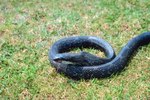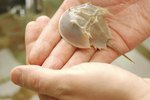Scorpions are recognized by their lobster-like pincers and tail. Most scorpion species are harmless to humans but some are known for their venomous stings, which can be fatal. Identifying dangerous scorpions include careful examination of the size, length and thickness of the arachnid.
Examine the length of the scorpion from head to tail, since scorpions less than 4 inches in length are dangerous to humans.
Look at the thickness of the scorpion’s claws, which are also known as pincers. Scorpions with chunkier pincers, similar to a lobster, are less venomous than those with slender pincers.
Examine the length and thickness of the scorpion’s tail. Scorpions with large, thick tails contain dangerous neurotoxic venom, while those with small, thin tails are harmless.
Tips
Scorpions tend to hide in pieces of wood or under stones. Avoid touching or capturing the insect in the wild.
References
Photo Credits
-
PhotoObjects.net/PhotoObjects.net/Getty Images
Writer Bio
Residing in Chippewa Falls, Wis., Jaimie Zinski has been writing since 2009. Specializing in pop culture, film and television, her work appears on Star Reviews and various other websites. Zinski is pursuing a Bachelor of Arts in history at the University of Wisconsin.




